That One Thing (TOT) Part 2
What Holds You Back?
by Michele Parrish
During my career as an operations leader in the high tech industry, I experienced the tremendous value of applying Theory of Constraints to optimize manufacturing operations. Eli Goldratt was actually a physicist who developed the theory and defined it in a seminal allegorical book—The Goal. The fictional book applies non-fictional TOC methods to realistic problems in a manufacturing setting.
At any point in time, a particular constraint (such as inadequate capacity of a machine tool) can limit the total system’s throughput. When that constraint is resolved, another constraint becomes the most critical one, and so on . . . The system’s effectiveness is limited by that “one” thing, the main constraint. A non-physicist might simply say, “A chain is no stronger than its weakest link.”
As I transitioned from operations leader to executive coach and business consultant, Goldratt’s theory began to find another application. That was human development. As professionals who want to excel, is there “one” thing, one main quality that constrains us or holds us back?
Identifying and classifying our strengths can be helpful and affirming. Current literature in the people development area (e.g., Marcus Buckingham’s work) emphasizes focusing on those strengths, and applying them positively to our continued growth. My mission as an executive coach is to “help brilliant people shine brighter.” Strengths Finders by Tom Rath and multi-dimensional assessments, such as the suite we offer in partnership with Target Training International (TTI), can add considerable self-awareness and areas for enhancement.
But, as we identify and build on our strengths, we don’t want to overlook our limiters. Some professionals, including myself, would support the notion that a strength, if overused, can become a limiter. We can all think of examples of this.
Most assessment interviews contain a question, frequently toward the end of the session, “What are your 2 or 3 major strengths, and what are 2 or 3 areas in which you would like to improve? Good ways to answer such a question are a topic for a future article, but for now, I want to focus on: WHAT IS THAT ONE CONSTRAINT, THE ONE THING THAT HOLDS YOU BACK? Of the 2 or 3 improvement areas you know about yourself, which one is the big one? Once we identify the one constraint, work on it and make real progress (this may take a long time), we can ask ourselves the question again, answer it and thereby identify our new “one” thing.
We humans are not machines and we are not manufacturing systems, but Goldratt’s Theory of Constraints can be applied to our growth and improvement efforts. There is always a rate limiter. As professionals, as people who want to maximize our effectiveness, we must determine our rate limiters. What holds us back? What stops us from getting to that next level of performance, or from getting promoted? Do we have multiple limiters and if so, which one is holding us back the most right now?
Interpreting and applying Goldratt’s theory to human development has been useful and has made sense to me and to my clients. Instead of identifying 2, 3 or more areas for improvement, if we accurately determine what is that “one” thing that is our biggest limiter, we can devote our energies primarily toward that to make real progress. I find that if we have several things to work on, to improve, we may work on the easiest one first or we may bounce around and try to make incremental progress in several areas. This approach fails to maximize our results.
Determining that “one” main thing, the characteristic or quality that really holds us back is not necessarily easy. Perhaps it has been mentioned gently or in a roundabout way by someone at a time that we really were not ready to hear it. Or, maybe we heard it, worked on it and made progress, and then considered it fixed.
So how do you find what’s limiting you most today? Just like in a manufacturing system, you must focus and study to find your constraint. Asking questions of ourselves and others are excellent ways to find that one thing you need to work on immediately. That external perspective is invaluable, and sometimes those who know us best can be very helpful. A key question to ask is, “Who is willing to tell me something I really don’t want to hear?!” I have a favorite quote from legendary Dallas Cowboys coach Tom Landry: “A coach is someone who tells you what you don’t want to hear and who has you see what you don’t want to see so you can be who you have always known you could be.”
We will examine next time, in Part III of this series, how to set the stage for candid feedback, and further explore the important questions to ask. For now, let’s start with some probing questions to ask yourself.
7 Key questions to ask ourselves:
- What is holding me back?
- What am I resisting that keeps persisting? That is, what problems keep reoccurring?
- What do I get highly emotional about? Why?
- What keeps me from rising to the next level?
- What skills or credentials am I missing?
- What behaviors of mine appear to annoy others?
- What inner beliefs limit me from moving toward my goals?
Ask yourself the above questions, evaluate the answers and be as honest as you can. If an answer seems sort of “pat” or shallow, ask yourself the question again.
Next time, after you have had time to analyze yourself more deeply, and hopefully have some idea as to what that one main thing that holds you back is, I will suggest a process to engage others in providing meaningful feedback to you. In the meantime, embrace and challenge yourself!
Parrish Partners, LLC, All Rights Reserved 2016
Editorial Contributions by Norm Lanier
